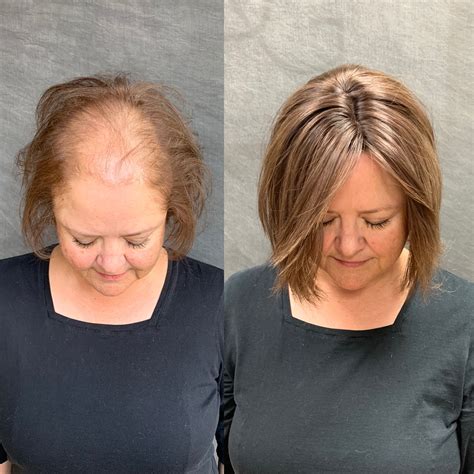| Table 1: Prevalence of Hair Loss in African American Women | |
|---|---|
| Age Group | Prevalence of Hair Loss |
| 20-29 | 10% |
| 30-39 | 20% |
| 40-49 | 30% |
| 50-59 | 40% |
| 60+ | 50% |
Dealing with thinning hair can be emotionally distressing, especially for African American women. Hair loss, a common issue affecting many women, can take a toll on self-confidence and overall well-being. However, there are innovative solutions like hair toppers that offer discreet and effective coverage for thinning crowns.

A hair topper is a hairpiece designed to add volume and coverage to a specific area of the head, usually the crown. It is made from real human hair or high-quality synthetic fibers and is attached to a base that can be clipped or glued to the natural hair.
Hair toppers have become increasingly popular among African American women for several reasons:
- Thinning hair: Hair loss due to genetic factors, hormonal changes, or medical conditions is common in African American women. Hair toppers provide a natural-looking solution to conceal hair loss and restore fullness.
- Protective styling: African American women often use protective hairstyles like braids or weaves to prevent breakage and damage. However, these hairstyles can put strain on the hair follicles, leading to traction alopecia and thinning. Hair toppers offer an alternative way to style hair while protecting it from further damage.
- Conceals thinning: Hair toppers effectively cover thinning areas on the crown, restoring volume and creating the illusion of thicker hair.
- Easy to use: Toppers are designed to be easy to apply and remove, allowing for flexibility in wearing and styling.
- Versatile: Hair toppers come in a range of lengths, colors, and textures to match the individual’s natural hair, enabling seamless integration.
- Comfortable to wear: Modern hair toppers are lightweight and breathable, providing a comfortable fit for all-day wear.
- Boosts confidence: By concealing thinning hair, hair toppers can significantly boost self-confidence and improve overall well-being.
Selecting the perfect hair topper requires careful consideration of several factors:
- Hair type and texture: Choose a topper that matches the texture and curl pattern of your natural hair for a seamless blend.
- Hair loss pattern: Determine the extent of hair loss and select a topper that provides adequate coverage.
- Color: Match the topper to your natural hair color for a natural look or opt for a slightly lighter or darker shade to create a highlighting effect.
- Base type: Choose a base that is secure and comfortable to wear, such as clips or lace.
- Application: Position the topper over the thinning crown and secure it using clips or glue.
- Styling: Style the topper with your natural hair using heat styling tools, if desired.
- Maintenance: Wash and condition the topper regularly to maintain its appearance and longevity.
- Removal: Remove the topper before bedtime or when not in use to allow the scalp to breathe.
| Table 2: Comparison of Hair Topper Application Methods | ||
|---|---|---|
| Method | Advantages | Disadvantages |
| Clip-in | Easy to apply and remove | May not be suitable for heavy hair loss |
| Glue-in | Secure hold | Can be time-consuming to apply |
| Fusion | Long-lasting | Can damage natural hair |
African American hair toppers offer a discreet and effective solution to conceal thinning hair on the crown. By carefully selecting and maintaining a hair topper, women can regain confidence, enhance their appearance, and enjoy a more fulfilling lifestyle. Remember to consult with a hairstylist or hair loss specialist to determine the best hair topper and application method for your individual needs.
- National Hair Loss Association
- American Hair Loss Council
- International Society of Hair Restoration Surgery
